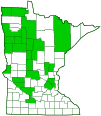Nuttall’s evening primrose
(Oenothera nuttallii)
Conservation • Description • Habitat • Ecology • Use • Distribution • Taxonomy
Conservation Status |
|
|||||||
| IUCN Red List | not listed |
|||||||
| NatureServe | NNR - Unranked SNR - Unranked |
|||||||
| Minnesota | not listed |
|||||||
Description |
||
Nuttall’s evening primrose is a 12″ to 32″ tall, erect, perennial forb that rises from creeping roots. In the first year it forms a 3″ to 6″ wide rosette of basal leaves. In the second year it send up a flowering stem. It usually dies after bearing fruit once. The stem is silvery-white, erect, and branched. Near the base it is hairless and may be covered with white, peeling bark. Near the inflorescence it is covered with minute, glandular hairs. The leaves are alternate, stalkless, ascending to widely spreading, linear to linear-oblong, ¾″ to 3⅛″ long, and about ¼″ wide. They taper to the stem at the base and taper to a point at the tip with straight sides along the tip. The upper surface is hairless. The lower surface is covered with short, white, curved hairs. The margins are mostly untoothed, though sometimes there are barely perceptible teeth near the tip. The inflorescence is flowers appearing singly in the upper leaf axils. The flowers are large, showy, and stalkless. What appears to be a stalk is, in fact, an elongated ovary surmounted by a hypanthium, a floral tube formed by the fused bases of the sepals, petals, and stamens. The floral tube is yellowish-green to reddish and covered with minute, fine, short, soft hairs. When in bud it is ½″ to 1″ long or longer and drooping, with the bud nodding downward. When in bloom the floral tube elongates to 1″ to 1½″ in length, straightens somewhat, and the flower is held pointing outward or somewhat upward. The flowers are ½″ to 2″ in diameter when fully open. There are 4 sepals and 4 petals. The sepals are green, linear, and strongly bent backward along the flower stalk. The petals are white, turning pink with age; broadly elliptic or egg-shaped, and ½″ to 1″ long. There are 8 stamens of equal length, 4 united styles, and a distinctive, 4-lobed, cross-shaped stigma. The flowers have a disagreeable odor. They open around sunset and close by noon. They change from closed to fully open in just one minute. They are pollinated by hawk moths or sphinx moths, which feed on their nectar at night. The hypanthium, petals, and sepals are deciduous, withering and falling off when the fruit is formed. The fruit is a cylinder-shaped, ⅜″ to 1 3 ⁄16″ long, 4-celled capsule. The capsule is round or nearly round in cross section, and has 4 shallow, longitudinal grooves. It is densely covered with minute, white, appressed hairs. Each cell of the capsule contains one row of dark brown, egg-shaped seeds. |
||
Height |
||
12″ to 32″ |
||
Flower Color |
||
White |
||
Similar Species |
||
Habitat |
||
Dry. Prairies, hillsides. Sandy or gravelly soil. |
||
Ecology |
||
Flowering |
||
June to July |
||
Pests and Diseases |
||
|
||
Use |
||
|
||
Distribution |
||||
|
Sources |
|||
| 3/24/2023 | ||||
Nativity |
||||
Native |
||||
Occurrence |
||||
|
||||
Taxonomy |
|||
| Kingdom | Plantae (Plants) | ||
| Division | Tracheophyta (Vascular Plants) | ||
| Subdivision | Spermatophytina (Seed Plants) | ||
| Class | Magnoliopsida (Dicots) | ||
| Order | Myrtales (Myrtles, Evening Primroses, and Allies) | ||
Family |
Onagraceae (Evening Primrose) | ||
| Subfamily | Onagroideae | ||
| Tribe | Onagreae | ||
Genus |
Oenothera (Evening Primroses, Sundrops, and Beeblossoms) | ||
| Section | Anogra | ||
Subordinate Taxa |
|||
|
|||
Synonyms |
|||
Anogra nuttalliana |
|||
Common Names |
|||
Nuttall eveningprimrose Nuttall’s evening primrose Nuttall’s evening-primrose white-stemmed evening-primrose |
|||
Glossary
Axil
The upper angle where a branch, stem, leaf stalk, or vein diverges.
Hypanthium
A cup-like tubular structure of a flower formed from the fused bases of sepals, petals, and stamens, that surrounds the pistil. Its presence is diagnostic of many families, including Rose, Gooseberry, and Pea.
Linear
Long and narrow with parallel sides, as in a blade of grass.
Rachis
The main axis of a compound leaf, appearing as an extension of the leaf stalk; the main axis of an inflorescence.
Stigma
The portion of the female part of the flower that is receptive to pollen.
Visitor Photos |
|||||
Share your photo of this plant. |
|||||
| This button not working for you? Simply email us at info@MinnesotaSeasons.com. Attach one or more photos and, if you like, a caption. |
|||||
Dan W. Andree |
|||||
I think this is an Evening Primrose... I read they bloom or open at night and close during the day, but these were open at 2:20 pm in the afternoon that day. It was an overcast or cloudy day, but noticed a few others on the hillside open flowers too. |
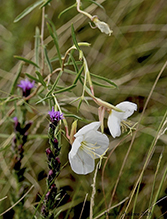 |
||||
MinnesotaSeasons.com Photos |
|||||
Plant |
|||||
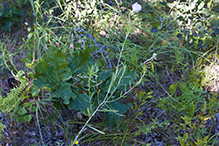 |
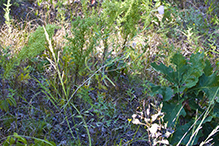 |
||||
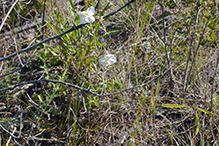 |
|||||
Flower |
|||||
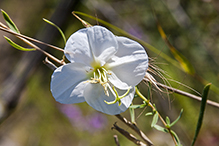 |
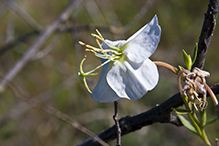 |
||||
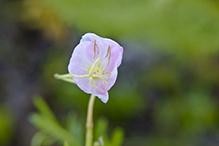 |
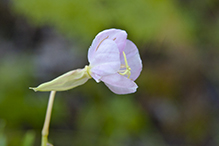 |
||||

Slideshows |
||

Visitor Videos |
|||
Share your video of this plant. |
|||
| This button not working for you? Simply email us at info@MinnesotaSeasons.com. Attach a video, a YouTube link, or a cloud storage link. |
|||
Other Videos |
|||


|
Created: Last Updated: © MinnesotaSeasons.com. All rights reserved. |
